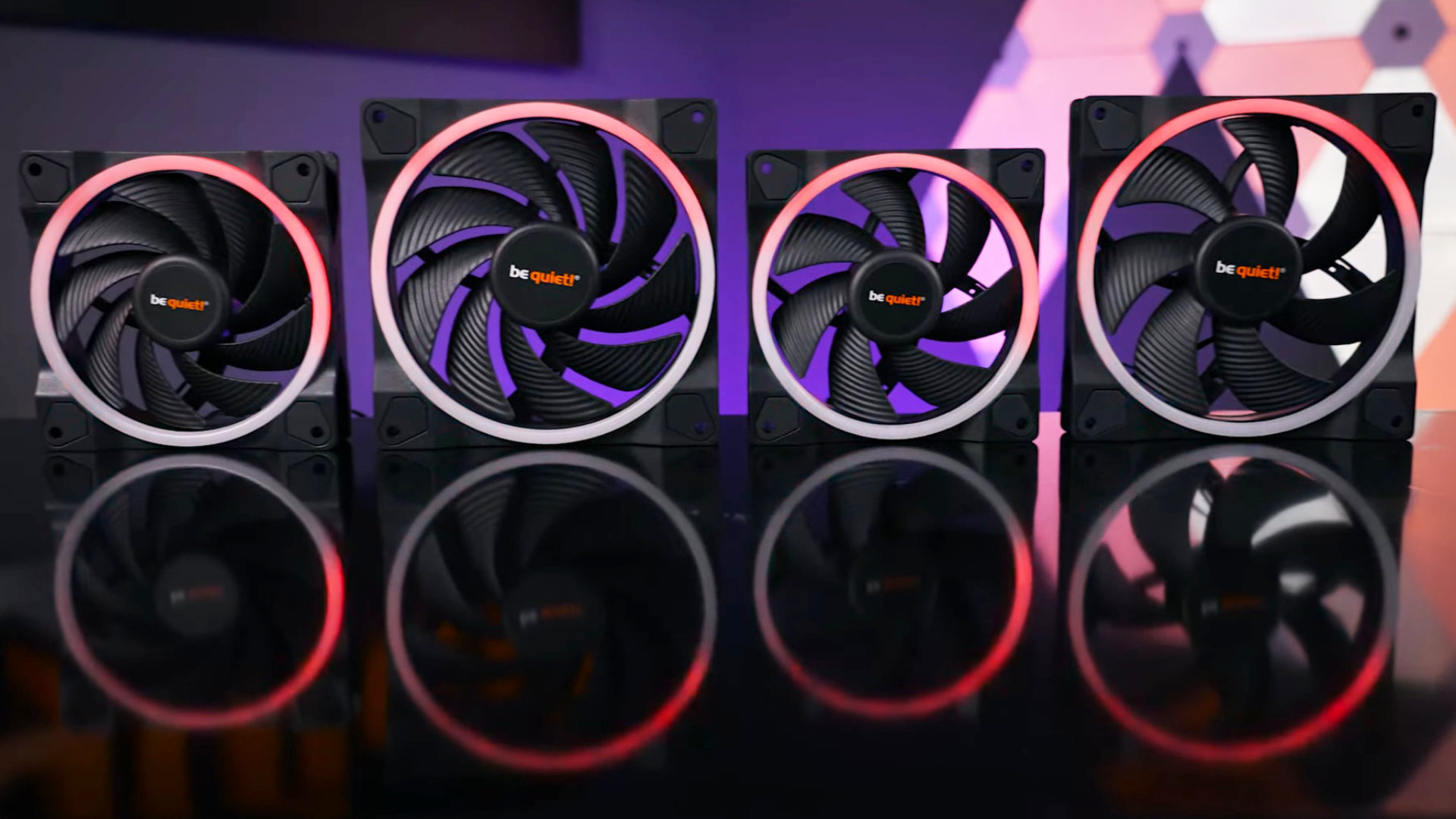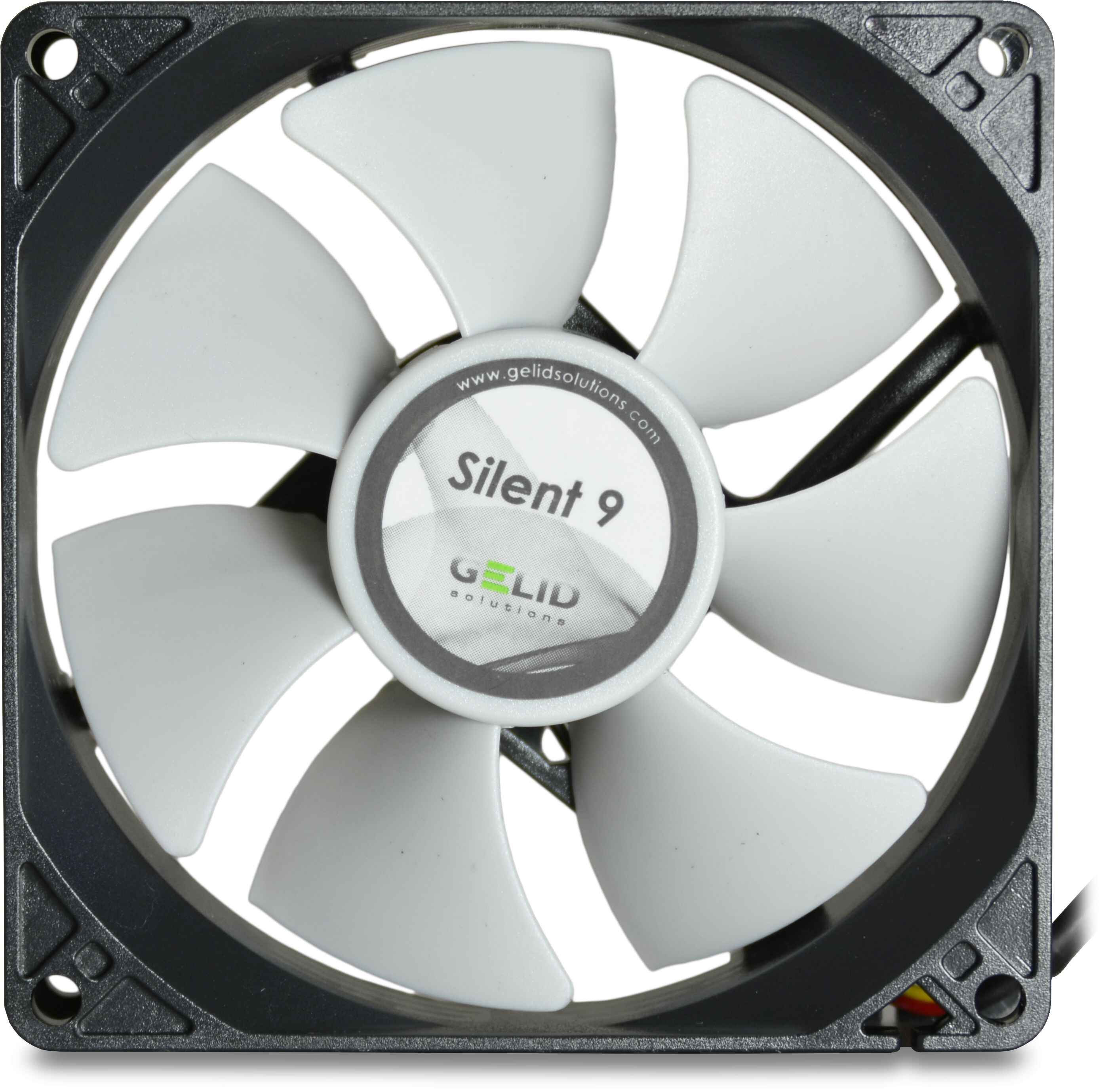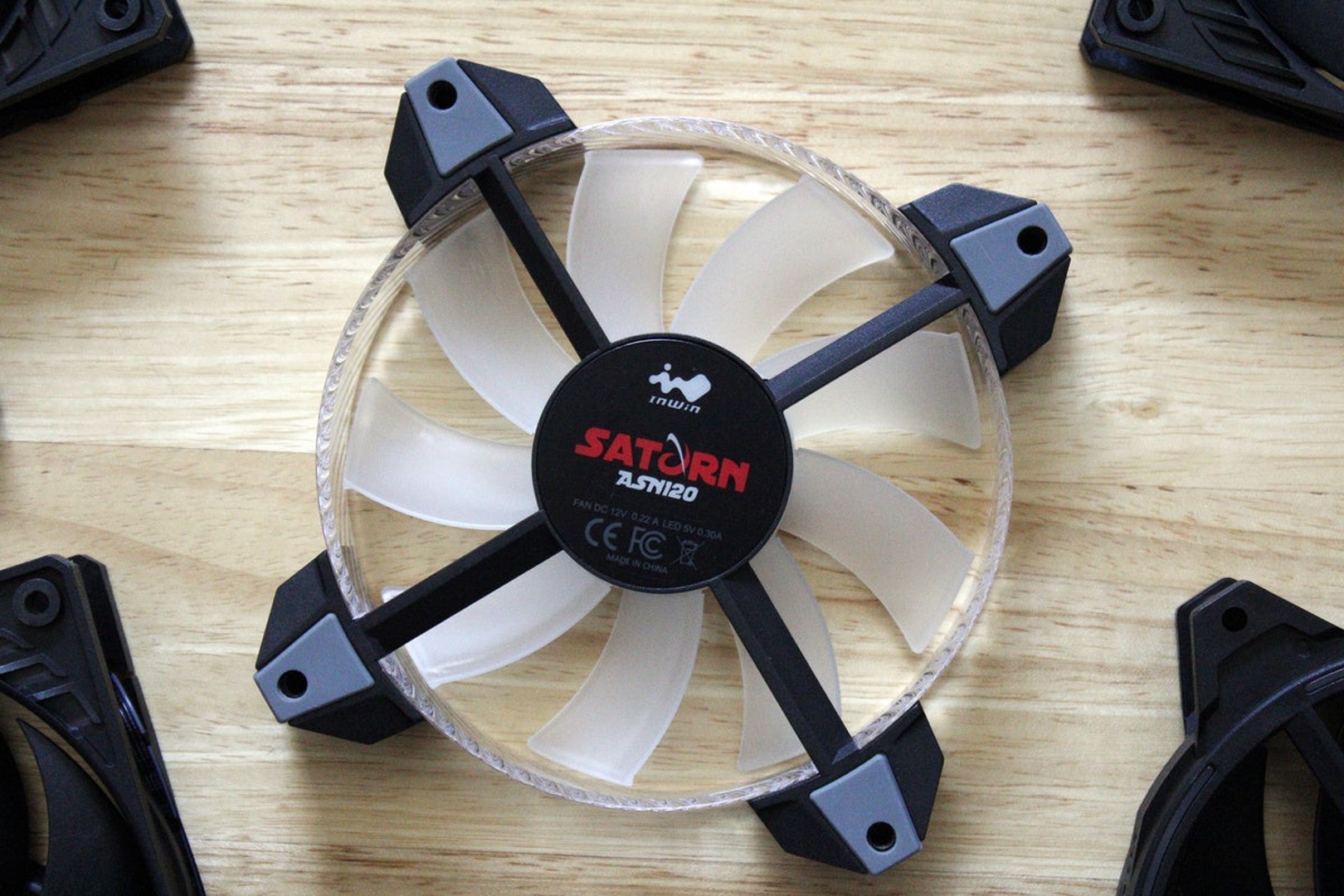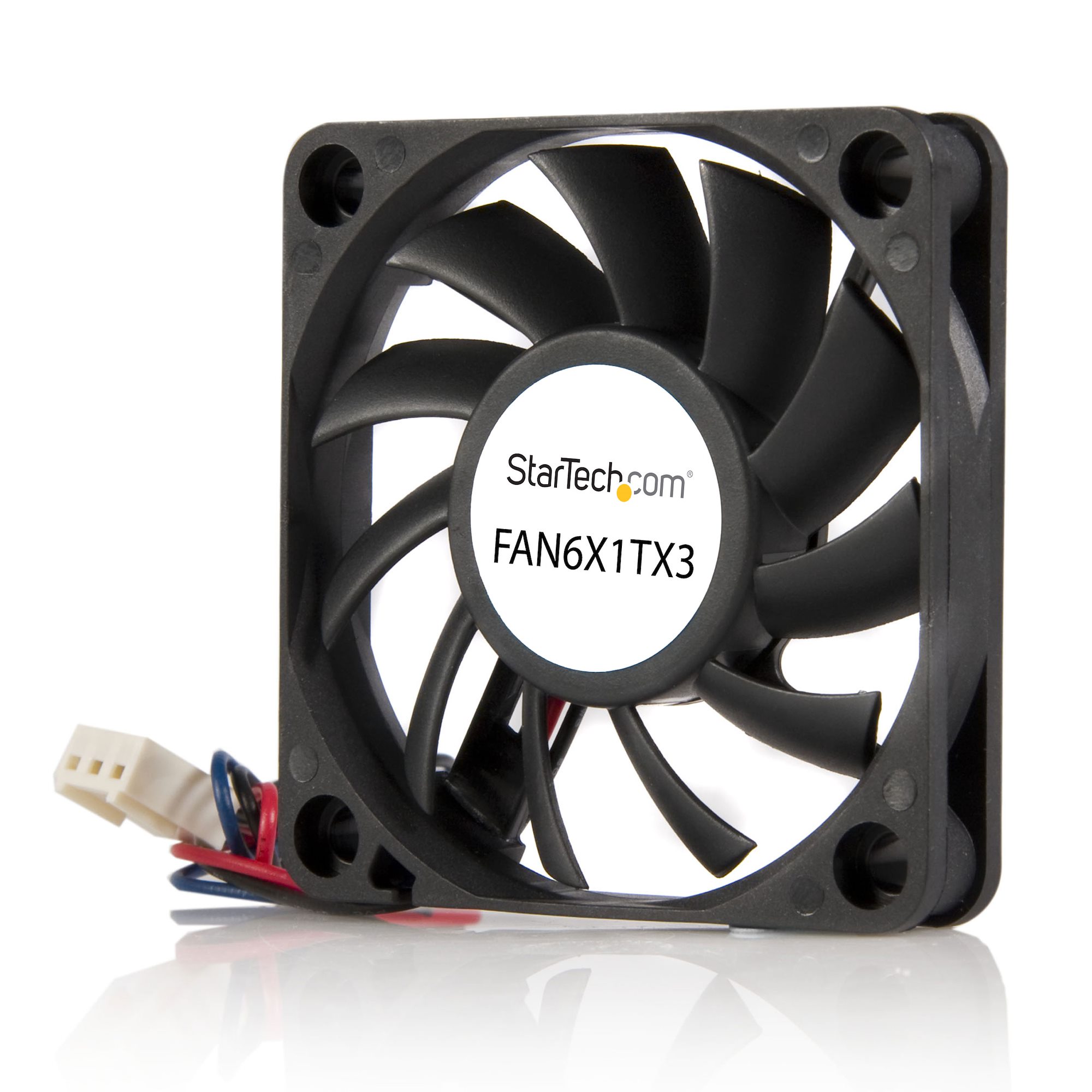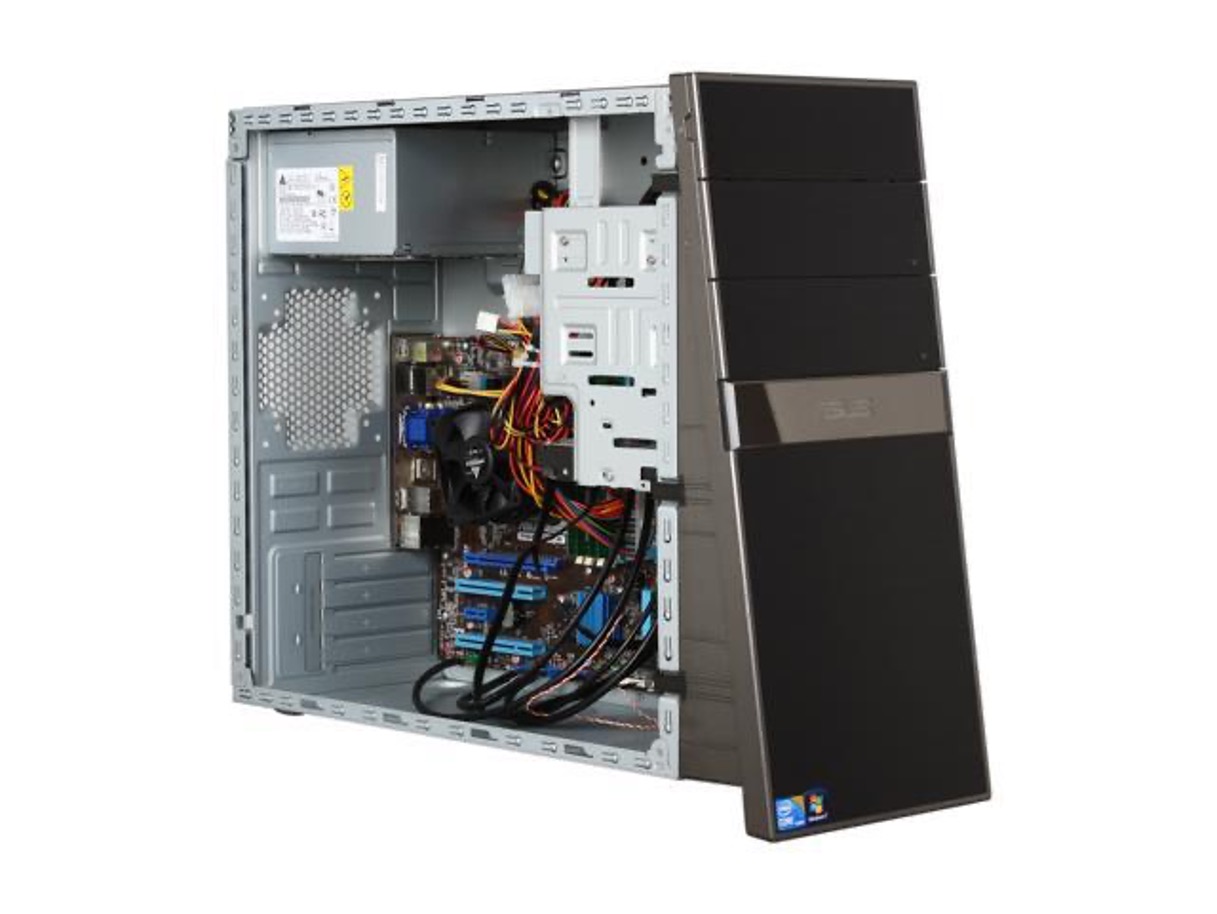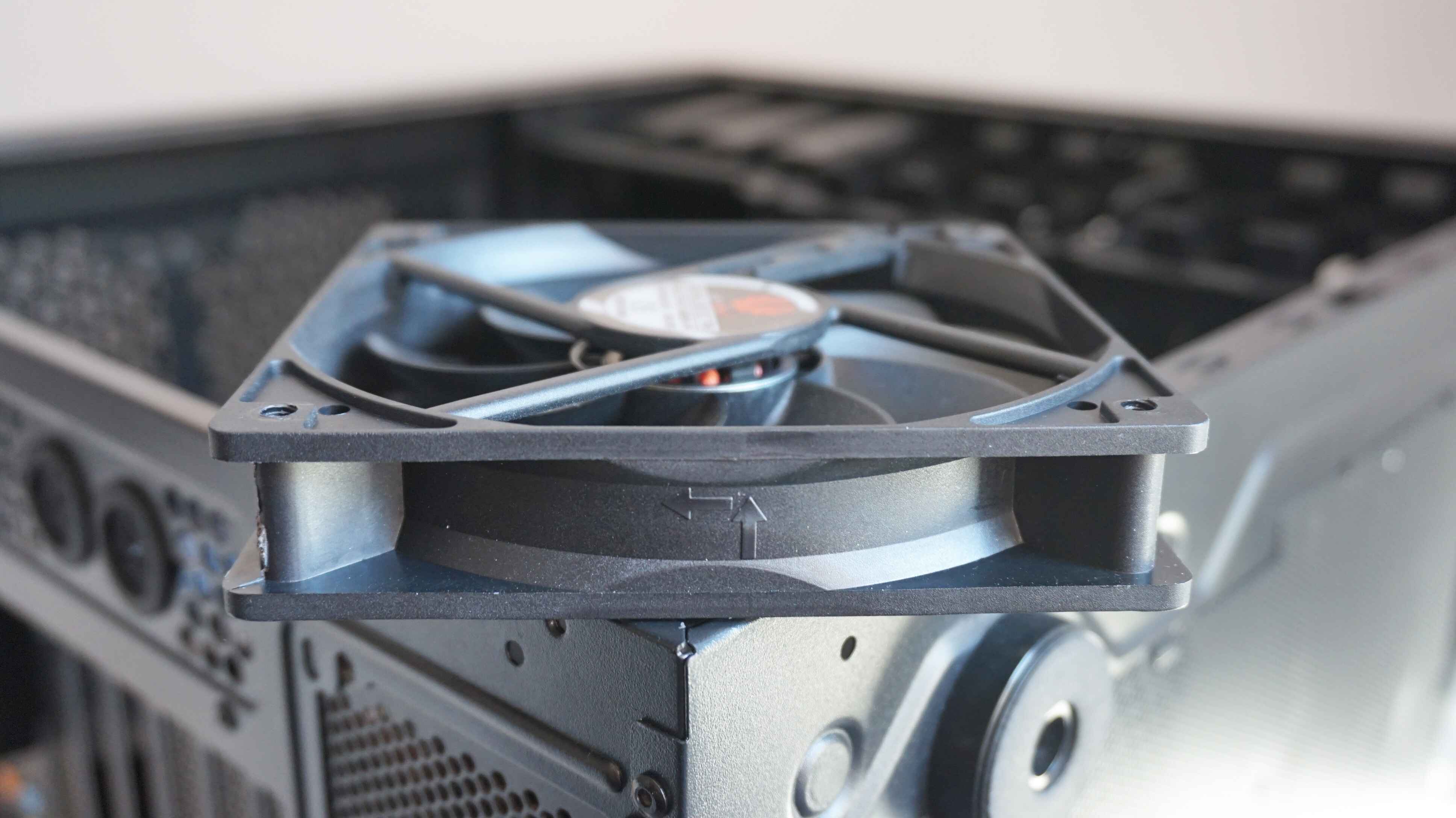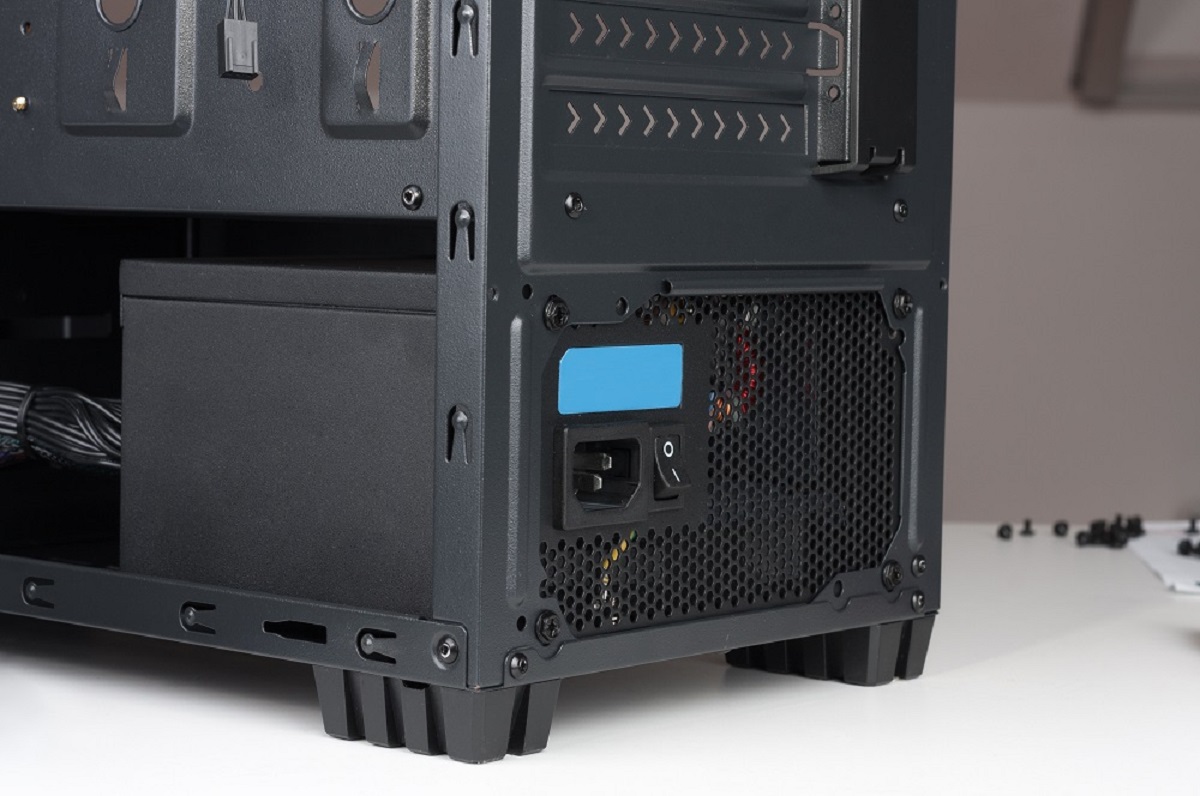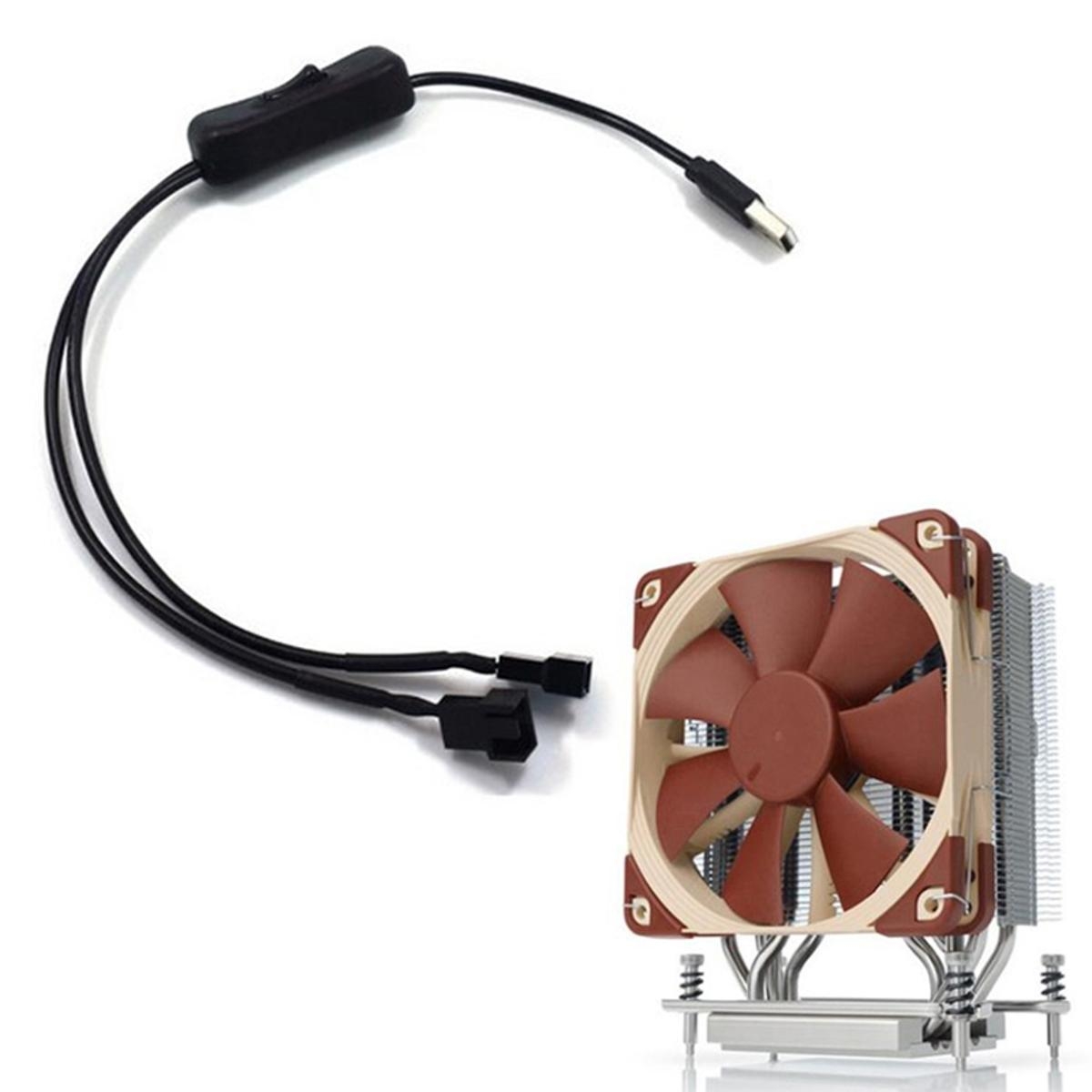Introduction
Welcome to the world of computer cooling! When it comes to keeping your computer running smoothly and efficiently, one component plays a crucial role: the case fan. A case fan is responsible for providing adequate airflow to cool down the computer’s components, ensuring they don’t overheat and suffer from performance issues.
But with so many options available on the market, how do you know which case fan is the best choice for your computer? This article will guide you through the factors to consider when choosing a case fan and help you find the perfect option for your needs.
Before we dive into the details, it’s important to understand that selecting the right case fan is not a one-size-fits-all task. There are various factors to consider, such as the size of your computer case, the level of noise you’re willing to tolerate, and the specific cooling requirements of your components.
In this article, we’ll discuss the different types of case fans available, the factors to consider when choosing the size of a case fan, the importance of noise levels, and the concepts of airflow and static pressure. We’ll also highlight some of the top case fans on the market to help you make an informed decision.
Whether you’re an avid gamer, a professional video editor, or simply a casual computer user, choosing the right case fan can greatly improve your computer’s performance and longevity. So, let’s get started and find the best case fan for your computer!
Factors to Consider When Choosing a Case Fan
When selecting a case fan, there are several important factors to consider to ensure you make the right choice. Let’s take a closer look at these factors:
- Airflow: One of the primary considerations when choosing a case fan is airflow. Airflow refers to the movement of air through the fan, which helps cool down the components in your computer. Look for a case fan with a high airflow rating to ensure efficient cooling.
- Noise Level: Case fans can produce varying levels of noise, which can be a concern for some users. If you prefer a quieter system, look for a fan with a lower noise level. Fans with higher noise levels may offer more airflow, but they can be distracting during quiet tasks or while watching movies.
- Static Pressure: Static pressure is another crucial factor to consider. It refers to the fan’s ability to push air through restricted spaces, such as heatsinks or radiators. Static pressure is essential for cooling components that require a focused airflow, like the CPU or graphics card. Ensure that your case fan has an adequate static pressure rating if you plan to use it for cooling these components.
- Size: Case fans come in various sizes, typically measured in millimeters (mm). The most common sizes are 120mm and 140mm, although smaller and larger options are available. Consider the size of your computer case and the available mounting locations when choosing a fan size. Larger fans tend to provide better airflow at lower RPMs, resulting in quieter operation.
- Connector Type: Check the connector type of the case fan to ensure compatibility with your motherboard or fan controller. The most common connector types are 3-pin and 4-pin (PWM). While 3-pin connectors provide basic speed control, 4-pin connectors offer more precise control through pulse-width modulation.
- Budget: Like any computer component, case fans come in a range of prices. Set a budget and consider the features and performance you need within that range. Remember that quality is important to ensure longevity and performance.
- Additional Features: Some case fans come with additional features such as RGB lighting or fan controllers. These features can add aesthetic appeal or offer more control over fan speeds and lighting effects. Consider whether these features are important to you when making your decision.
By considering these factors, you can narrow down your options and choose a case fan that meets your cooling requirements while fitting within your budget. Now, let’s explore the different types of case fans available on the market.
Types of Case Fans
When it comes to case fans, there are several types to choose from. Each type offers unique features and advantages. Let’s explore the most common types:
- Axial Fans: Axial fans are the most common type of case fan. They consist of blades that rotate around an axis to create airflow. Axial fans are known for their high airflow and are suitable for general cooling purposes. They are often affordable and come in various sizes to fit different computer cases.
- Blower Fans: Blower fans, also known as centrifugal fans, are designed to direct airflow in a specific direction. Unlike axial fans, they have an enclosed casing that helps in creating focused airflow. Blower fans are commonly used in small form factor cases or as GPU coolers, where space is limited, and directed airflow is beneficial.
- Static Pressure Fans: Static pressure fans are designed to generate high pressure and are ideal for cooling components that require focused airflow, such as heatsinks or radiators. They feature enhanced blade designs and are optimized for pushing air through restricted spaces. These fans are popular among gaming enthusiasts and overclockers.
- RGB Fans: RGB fans are a popular choice for those looking to enhance the aesthetics of their computer setup. These fans come with built-in RGB lighting, allowing you to customize the colors and lighting effects to match your preference. RGB fans are available in both axial and static pressure configurations.
- Silent Fans: Silent fans, as the name suggests, prioritize low noise levels. These fans are designed with noise reduction features such as specialized blade designs, rubber dampeners, and high-quality bearings. Silent fans are excellent for users who value a quiet computing experience and are willing to sacrifice a bit of airflow for reduced noise.
Each type of case fan has its own advantages and is suited for different applications. Consider the specific cooling needs of your computer and choose the type of fan that best meets your requirements.
Now that we’ve discussed the types of case fans available, let’s move on to another important factor to consider when choosing a case fan – the size.
Factors to Consider When Choosing the Size of a Case Fan
Choosing the right size for your case fan is essential to ensure optimal cooling performance. Here are some factors to consider when selecting the size:
- Available Space: The first factor to consider is the available space inside your computer case. Measure the mounting locations and check the clearance to determine the maximum fan size that can be accommodated.
- Mounting Options: Different case sizes and designs may offer various mounting options for fans. Some cases have dedicated mounts for specific fan sizes, while others provide multiple mounting locations to accommodate different sizes. Consider the mounting options available in your case and choose a fan size that fits those locations.
- Airflow Needs: Consider the cooling requirements of your components. Larger fans generally provide higher airflow while operating at lower RPMs, resulting in quieter operation. If you have high-performance components or plan on overclocking, larger fans can help ensure sufficient airflow to keep them cool.
- Fan Placement: Different fan sizes have different performance characteristics based on their placement. For example, larger fans at the front of the case can provide excellent intake airflow, while smaller fans at the rear can offer efficient exhaust. Consider the ideal placement for cooling your specific components and choose fan sizes accordingly.
- Noise Considerations: Smaller fans often need to operate at higher RPMs to achieve similar airflow levels as larger fans. This can result in increased noise levels. If noise is a concern for you, opting for larger fans operating at lower RPMs may be a better choice.
While 120mm and 140mm fans are the most common sizes, it’s important to note that smaller and larger options are available. Smaller fans, such as 80mm or 92mm, are suitable for compact cases or specific cooling needs. On the other hand, larger fans, such as 200mm, offer excellent airflow and are great for high-performance setups or cases with ample space.
Ultimately, choosing the right fan size requires considering the available space, cooling requirements, noise preferences, and the overall design of your computer case. By doing so, you can ensure efficient and effective cooling for your components.
Now that we’ve covered the factors to consider when choosing the size of a case fan, let’s delve into an important aspect of fan selection – the noise levels produced by case fans.
Noise Levels of Case Fans
When choosing a case fan, it’s crucial to consider the noise levels it produces. No one wants a computer that sounds like a jet engine taking off. Here are some factors to consider regarding the noise levels of case fans:
- Determine Your Noise Tolerance: Start by determining your personal tolerance for fan noise. Some users don’t mind a bit of background noise, while others prefer a near-silent computing environment. Knowing your preferred noise level will help you make a more informed decision.
- Noise Level Specification: Case fan noise levels are typically measured in decibels (dB). Look for fans that provide a noise level specification in their product details. Lower dB values indicate quieter operation.
- Fan Speed Control: Fans with adjustable speed control can significantly impact noise levels. Lowering the fan speed reduces noise, but it might also affect the airflow. Consider fans that offer speed control options such as voltage control or PWM (Pulse Width Modulation).
- Advanced Noise Reduction Features: Some case fans come equipped with advanced noise reduction features. These features can include specialized blade designs to reduce noise, rubber dampeners to minimize vibrations, or high-quality bearings for smoother and quieter operation. Look for fans that offer these additional noise reduction features if silence is a priority for you.
- Air Flow vs. Noise: There is often a trade-off between airflow and noise levels. Fans that provide higher airflow might generate more noise due to higher RPMs. Consider your cooling needs and the acceptable noise level to strike the right balance between performance and silence.
It’s important to note that noise perception can vary from person to person. What might be tolerable for one individual could be bothersome for another. If possible, read reviews or seek recommendations from other users who prioritize noise levels.
Ultimately, finding the right balance between cooling performance and noise levels is key when choosing a case fan. Assess your noise tolerance, consider noise level specifications, explore fan speed control options, and look for advanced noise reduction features to create a more pleasant computing experience.
Now that we’ve explored noise levels in case fans, let’s move on to understanding the importance of airflow and static pressure in determining a fan’s effectiveness.
Airflow and Static Pressure
When it comes to case fans, two important metrics to consider are airflow and static pressure. Understanding these concepts is crucial in determining a fan’s effectiveness. Let’s delve into what they mean:
Airflow: Airflow refers to the amount of air that a fan can move within a specific time period. It is typically measured in cubic feet per minute (CFM) or cubic meters per hour (m³/h). Higher CFM or m³/h values indicate greater airflow, which leads to more effective cooling. Fans with higher airflow ratings can help dissipate heat faster and maintain lower temperatures within the computer case.
Static Pressure: Static pressure is the resistance that a fan encounters when pushing airflow through obstacles, such as heatsinks, radiator fins, or densely packed components. It is measured in millimeters of water (mmH2O) or Pascal (Pa). Fans with higher static pressure ratings can overcome the resistance and maintain a steady airflow through restricted areas. These fans are essential for component-specific cooling, such as CPU coolers or liquid cooler radiators.
Choosing the right balance between airflow and static pressure depends on your specific cooling needs. If you have components that require focused cooling, such as an overclocked CPU, a fan with higher static pressure is preferable to effectively push air through the heatsink. Likewise, if your computer has ample space and you prioritize general cooling for the entire system, fans with higher airflow ratings may be more suitable.
It’s important to note that airflow and static pressure are not mutually exclusive. Some fans are designed to excel in both metrics, providing a balance between efficient airflow and the ability to overcome obstacles. These fans are often labeled as “high airflow, high static pressure” and are ideal for cases with a mix of unrestricted and restricted airflow.
When considering airflow and static pressure, it’s essential to also consider the noise levels produced by the fan. Fans with high airflow or static pressure can often generate more noise due to their higher RPMs. Striking the right balance between performance and noise is key to creating a well-cooled and quiet computing environment.
Now that we understand the concepts of airflow and static pressure, let’s move on to our next section, where we’ll highlight some of the top case fans on the market.
Top Case Fans on the Market
With an abundance of case fans available, it can be overwhelming to determine which ones are the best options. Here are some top case fans on the market that have gained popularity for their performance, features, and reliability:
- Noctua NF-F12: Known for their excellent build quality and silent operation, Noctua NF-F12 fans offer a good balance between airflow and static pressure. These fans are highly regarded for their efficiency and come equipped with advanced features like SSO2 bearings and vibration dampeners.
- Corsair LL Series: Corsair LL Series fans are popular for their stunning RGB lighting effects and high airflow. With their unique dual-loop lighting, these fans can create eye-catching lighting patterns. The LL Series fans also offer solid performance and come in both 120mm and 140mm sizes.
- be quiet! Silent Wings 3: As the name suggests, be quiet! Silent Wings 3 fans prioritize low noise levels without sacrificing performance. These fans feature a unique blade design for efficient airflow and come with rubber mounting pads to minimize vibrations. Silent Wings 3 fans are an excellent choice for users who value a silent PC.
- ARCTIC P12: The ARCTIC P12 fans are budget-friendly options that offer a good balance between airflow and noise levels. These fans come with a pressure-optimized blade design suitable for both case cooling and radiator cooling. With their affordable price point, the ARCTIC P12 fans are a popular choice for cost-conscious users.
- Thermaltake Riing Trio: The Thermaltake Riing Trio fans are well-known for their impressive RGB lighting effects. These fans feature ring-shaped RGB lighting around the frame and offer good airflow performance. The Riing Trio fans also come with software control for customizable lighting and fan speed adjustments.
It’s important to note that the suitability of a case fan depends on various factors such as your specific cooling needs, budget, and compatibility with your system. Before making a purchase, consider reading reviews, comparing specifications, and understanding your requirements to ensure the best match.
Remember that the top case fans may vary depending on individual preferences and specific use cases. The key is to find a case fan that fits your needs in terms of airflow, static pressure, noise levels, and additional features.
Now that we’ve explored some of the top case fans on the market, let’s wrap up our discussion.
Conclusion
Choosing the best case fan for your computer is essential for maintaining optimal performance and preventing overheating. By considering factors such as airflow, noise levels, static pressure, fan size, connector type, budget, and additional features, you can narrow down your options and make an informed decision.
First and foremost, assess your specific cooling needs and determine your tolerance for fan noise. This will help you strike the right balance between performance and quiet operation. Consider the available space in your computer case, the mounting options, and the cooling requirements of your components when choosing the size and type of case fan.
Remember that airflow and static pressure are vital factors in determining a fan’s effectiveness. Depending on your specific needs, prioritize either high airflow for general cooling or higher static pressure for component-specific cooling.
Additionally, keep in mind the importance of noise levels. Fans with advanced noise reduction features or adjustable speed control can help create a more pleasant and quiet computing environment.
Finally, we highlighted some top case fans on the market, including the Noctua NF-F12, Corsair LL Series, be quiet! Silent Wings 3, ARCTIC P12, and Thermaltake Riing Trio. These options have gained popularity for their performance, features, and reliability. However, it’s crucial to consider your own requirements and read reviews to find the best fit for your specific needs and budget.
When it comes to selecting a case fan, it’s important to find the right balance between cooling performance, noise levels, and aesthetics. With the right case fan, you can ensure that your computer runs smoothly, efficiently, and quietly, giving you the optimal computing experience you desire.







